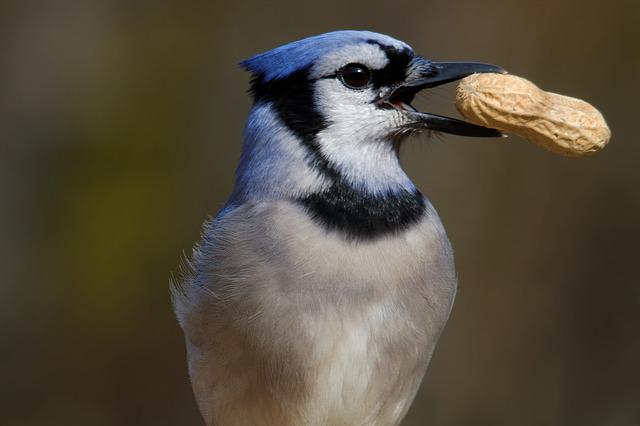The Blue Jay is well-known across society as one of North America’s most attractive and clever birds.
These birds have a range that stretches from Alberta in Canada to Florida in the United States, as well as the southeast and the central United States.
Their migration patterns have also revealed that whereas their eastern populations are primarily seasonal inhabitants, the western populations are more prone to go south during the winter.
Americans have been fascinated by these birds for ages. The idea that their family is among the noisier and chattier birds is where the name “Jay” originates.
They were frequently included as figures in the mythologies of early folklore traditions.
There are some great facts about these birds, and this is a complete guide to the most interesting and fun facts about Blue Jays.
If you need to know, continue reading.
Interesting Facts About Blue Jays
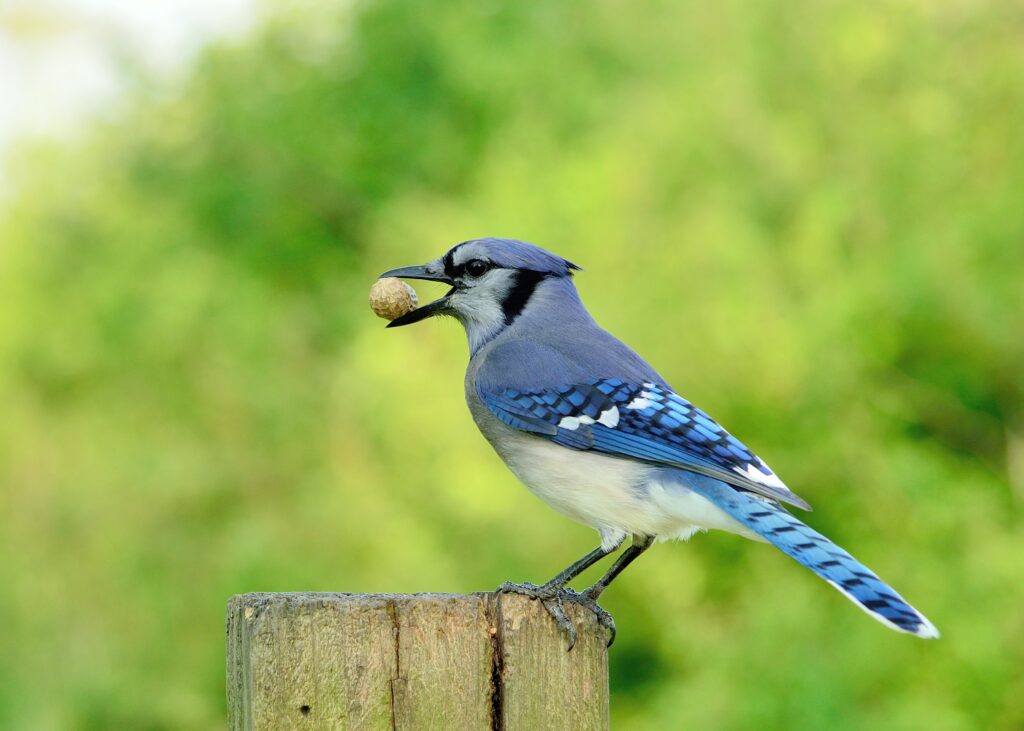
1. Blue Jays Are Not Blue
Blue jays have what appear to be blue feathers, but in reality, they are brown. The color that would remain if you broke down a blue jay feather would be brown.
Light scattering, which occurs when the light goes through an item without reflecting off of it, is to blame for this.
Simply put, a blue jay’s feathers have a unique cell that allows all other colors to pass through except blue when light strikes it. Additionally, when blue jay feathers get wet, they turn brown to their real natural color, which is visible.
2. Blue Jays Are Related To Crows
Although it can be difficult to imagine, crows and blue jays belong to the same broader family. These two bird species, which are both members of the Corvidae family, once had a common ancestor.
Although their colors are different, they frequently share traits such as powerful beaks, lengthy tails, and intelligence.
3. Blue Jay Migration Patterns Are Irregular
One of the more intriguing things about them might be this. Only certain populations within their range move south during the winter, with the others often remaining in their breeding areas for the entire year.
Younger Blue Jays are more likely to move than older ones, according to studies. A bird could not migrate the next year again if it migrates south in a particular year.
4. Scientific Name and Subspecies of the Blue Jay

Cyanocitta cristata is the Blue Jay’s scientific name. The term Cyanocitta comes from the Greek words kyaneos, which means blue, and kitta/Kissa (meaning chattering jay).
The particular term, Cristata, comes from the Latin word for tufted. The scientific name thus closely translates to “blue chattering tufted jay” when put together.
5. Blue Jays Have A Sophisticated Social Structure
Blue Jays assemble in modest familial units to dwell. The entire group migrates with them if they move. These birds typically spend their entire lives with these groups, despite the fact that the frequency of their migrations is not known to be consistent.
Pairs stay together, and occasionally their kids will join them. Furthermore, it has been observed that blue jays would not feed their brooding chicks outside of the nest in order to condition them.
6. Blue Jays Are Masters At Imitation
These birds frequently warn other birds of approaching predators by imitating hawks’ pre-arrival screams.
Additionally, they have been seen to meow occasionally, possibly to scare off other bird species from popular feeding areas. It has been noted that blue jays grown in captivity mimic human speech.
7. Blue Jay Calls, Songs, and Sounds
Although a “songbird,” the Blue Jay is not a particularly skilled singer; its song is made up of clicks and whines and is not particularly distinctive.
On the other side, their gurgling and jeering calls are famed for being intrusive. A Blue Jay will scream loudly and may even chase or fight a nearby predatory bird (such as an owl or hawk).
Other animals, which are also prey for predatory birds, are made aware of this, and this ultimately helps them. When breeding, blue jays are at their most vigilant and hostile.
8. Blue Jays Have The Same Coloration Between The Sexes
Since the male of most species differs in color from the female, it is quite simple to distinguish between male and female birds.
Blue jays, however, look the same, making it challenging to tell whether they are male or female. Sexual monomorphism is the term used for this. The males of blue jays are often larger than the females, making it the simplest to distinguish between the two.
The alternate method is courting. Males who follow and imitate the movements of the one female present will typically be in close proximity.
9. One Of The Birds With The Longest Life Spans Is The Blue Jay
They have been known to survive up to 26 years in captivity. One of the most frequent causes of death for blue jays is predation by hawks, cats, and owls.
The monomorphic species is the blue jay. Since both the male and female have remarkably similar appearances, it might be challenging to distinguish between a male and female Blue Jay.
In the world of birds, where both sexes have distinct differences, a phenomenon known as dimorphism is relatively uncommon.
In contrast to its female, the male is typically a more colorful, noticeable bird. The Blue Jay, which has a stunning pattern on its wing bars and is vivid, lavender-blue on both sexes, is an exception to this rule.
10. Slow Fliers, Blue Jays
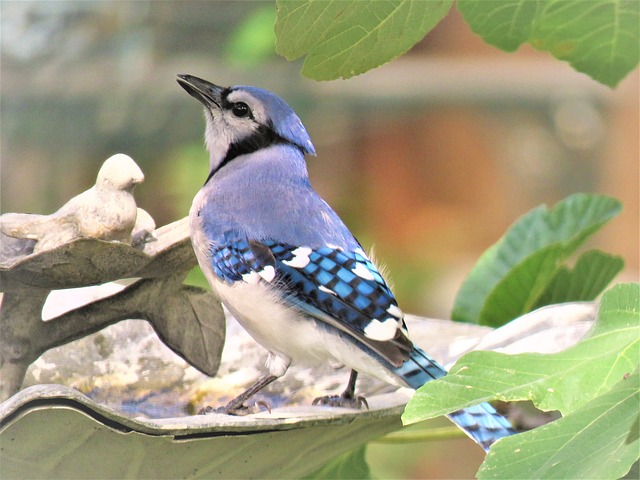
20 – 25 mph is the usual flight speed of blue jays. This can be compared to the speed of a duck, which is close to 60 mph, or the hawks, which fly at a high speed of 190 mph.
You may catch a full view of the stunning bird as it gracefully soars around at a low altitude while periodically beating its wings. Jay’s distinctive attribute of maintaining its body and tail at the same level when flying.
This explains why the bird’s extremely slow flight makes it a simple meal for raptors like hawks, falcons, and owls, who would mercilessly kill the bird anytime a chance presented itself.
11. Blue Jays Emit A Variety Of Noises
These perceptive birds enjoy talking constantly. They can mimic predator sounds, but aside from that, their vocalizations can be anything from sweet morning chirps to loud, annoying squawks.
Blue Jays certainly live up to their moniker, as the term “jay” is used to describe someone who enjoyed dominating conversations and was a chatterbox.
12. Blue Jay Has A High Intelligence
Blue Jays have been observed in captivity utilizing implements to obtain food, including sticks or newspaper scraps to draw food from outside of their cages closer to them, as well as picking locks.
Farmers have also seen them hold off on flying down and enjoying the seeds until after planting is complete.
13. Blue Jays Can Use Tools
Their aptitude with tools is one of the characteristics that distinguishes intelligence. Birds kept in captivity have been seen using pieces of newspaper and sticks to carry their food closer to them; however, they don’t do so frequently.
Additionally, they are capable of opportunistic behavior, frequently waiting for farmers to complete sowing their seeds before swooping down to consume them.
14. The Blue Jays Chatter A Lot
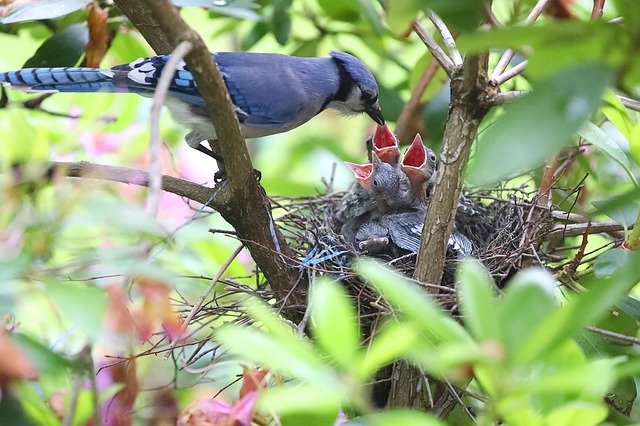
Blue Jays frequently exchange vocalizations with one another, which is seen from the variety and regularity of these vocalizations. While many of their vocalizations have yet to be understood, a wide range has been seen.
This shows that they are able to converse considerably more effectively with one another than just passing along messages.
15. A Blue Jay Imitates A Hawk
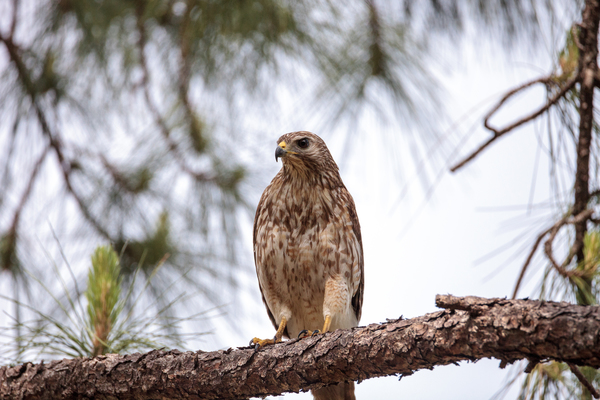
Blue Jays have a wide range of vocalizations, and it’s not uncommon to hear them imitate hawks, particularly the Red-shouldered Hawk.
One of two motives, or possibly both, are suggested by ornithologists as to why they do this. The first explanation holds that the imitation warns other jays about any hawks that might be around. The second is that hawks are being impersonated by jays in an effort to trick other animals.
16. Blue Jays Amass Paint Swatches
Light-colored paint has been observed to be chipped and hoarded by blue jays, perhaps as a calcium source for the spring.
Try supplying an alternative calcium source, such as crushed egg shells, if Blue Jays are scratching the paint off your house; this usually stops the undesirable behavior.
17. Blue Jay Migration Patterns Are Unpredictable
During the winter, not all blue jays migrate, and when they do, not all of them do so simultaneously. Blue jays migrate during the day in loose groups, sometimes with as few as five birds and as many as 250, according to observers.
The migration path of blue jays is still a mystery, and no patterns or resemblances have been identified. Migrations have been observed along the Atlantic and Great Lakes coasts, but the statistics change every year.
Although it is hypothesized that young birds migrate because of bad weather, investigations have shown that some adults also do so.
According to some hypotheses, migration may be influenced by food sources, which would account for its seasonal variations.
18. Blue Jays Propagate Seeds
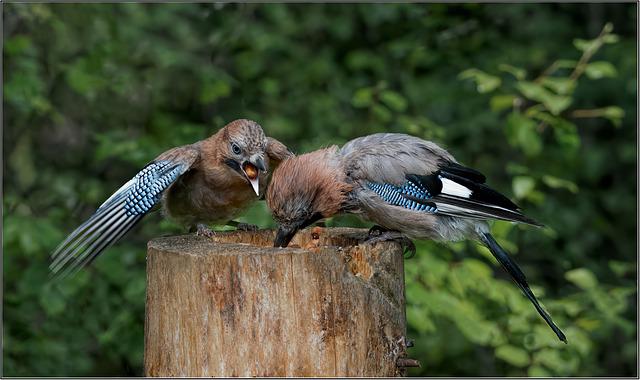
The Jays eat a variety of seeds and nuts, but they particularly enjoy acorns. The bird has the practice of storing a lot of food, especially acorns, in order to survive periods of scarcity.
These acorns are collected by the Jay from fields and hidden or buried for later use. However, the birds never eat a large portion of these buried and concealed acorns. Numerous of these seeds have the capacity to develop into fully grown oak trees.
These acorns can eventually create a forest with lots of oak trees if they are spread out randomly across a large area. Because of their special association, blue jays and oak trees help the trees spread far.
Check out this article on What Do Baby Blue Jays Eat?
19. Blue Jays Rub Ants On Their Feathers
Yes, you did read that right. Before eating the ants, the jays rub the ants on their feathers to remove their formic acid. We call this “Anting” Many explanations have been put out through time to explain this peculiar behavior.
One notion postulated that the secreted acid acted as a defense against bacteria and parasites; however, tests on bacteria cultures disproved this. The most likely explanation is straightforward: without the acid, ants taste better.
By exposing jays to ants with and without formic acid, ornithologists investigated this notion by seeing how the ants with the acid were treated to the rubbing ritual while the ants without it were devoured right away.
Check out this article on Cardinal Fun Facts.
Conclusion
This discussion shares the most interesting and fun facts about blue jays. We explained different behavior and voice tune along with the feeding habits of blue jays.
If you need more info on blue jays, consider taking a look at FAQ.
FAQ
What is the blue jay myth?
In native folklore, blue jays and ravens are closely related. They are viewed as arrogant, self-centered con artists. According to certain indigenous elders, seeing a blue jay close to one’s house was a sign that someone was scheming against them or had bad intentions for them.
Last Updated on March 22, 2023 by Lily Aldrin

